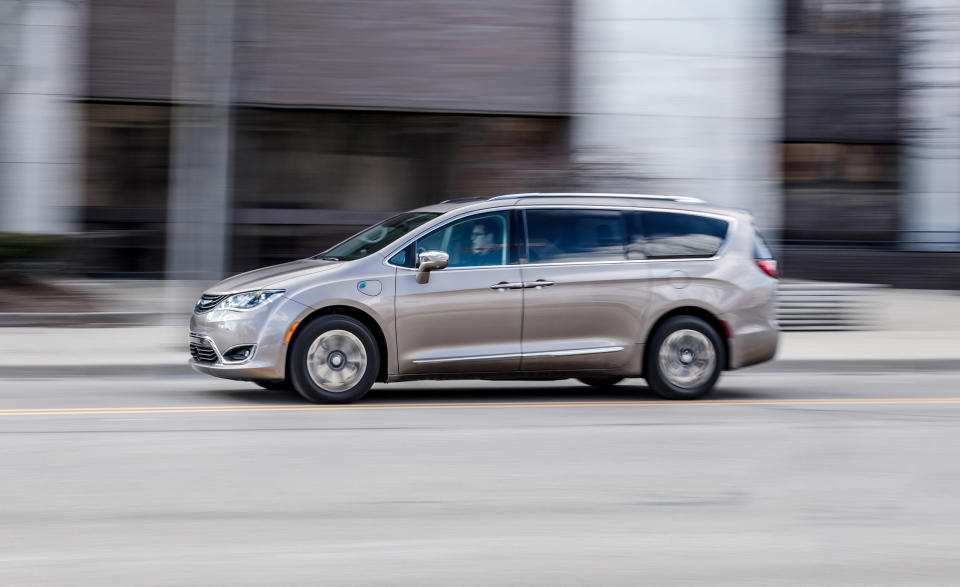2017 Chrysler Pacifica Hybrid

From the June 2017 issue
Only America’s most ardent pragmatists choose minivan function over crossover fashion. The country’s refusal to acknowledge the family van’s myriad virtues—unparalleled people-carrying comfort, unmatched interior volume, and unequaled interior flexibility—might be its greatest automotive sin. Stigma, then, is strong with the guardian of the sliding door. Yet Chrysler defiantly marches the minivan forward with the electrification of its Pacifica, possibly the most significant innovation since sliding doors appeared on both sides of its 1996 vans.
Starting with the 3.6-liter Pentastar V-6 found in the standard Pacifica, FCA engineers swapped the pistons, camshafts, and valves; bumped the compression ratio; and added Atkinson-cycle capability to maximize efficiency. Then they bolted the gas mill to a continuously variable planetary-gear transmission that houses two electric motor/generators. Add-on electron propulsion never comes without compromise, however, and the Pacifica hybrid suffers the loss of the underfloor bins where the second-row seats normally stow. That space instead harbors a 16.0-kWh lithium-ion battery pack that fully charges in two hours on a 240-volt, 30-amp circuit or in just over 14 hours using a 120-volt wall plug.

The upshot is a relatively long electric-only range, which we measured at 30 miles in 30-degree weather. (Chrysler claims 33 miles using the EPA’s methodology.)
But there is technically no all-electric mode, or any other selectable mode, for that matter. Chrysler says that minivan customers don’t want to have to think about maximum efficiency, so the company sets the powertrain parameters and that’s that.
The electrified van steers, turns, rides, and stops in ways not unlike the standard Chrysler van, despite a 568-pound weight penalty relative to a comparably equipped Pacifica Limited. Even its regenerative brake response, an interface where drivability often leaves the building, is a believable take on traditional friction stoppers. Compared with a standard Pacifica, only a half-second of zero-to-60-mph time is sacrificed on the altar of efficiency, but at a still-lively 7.8 seconds, acceleration is something no one is likely to complain about.


 Yahoo Autos
Yahoo Autos 